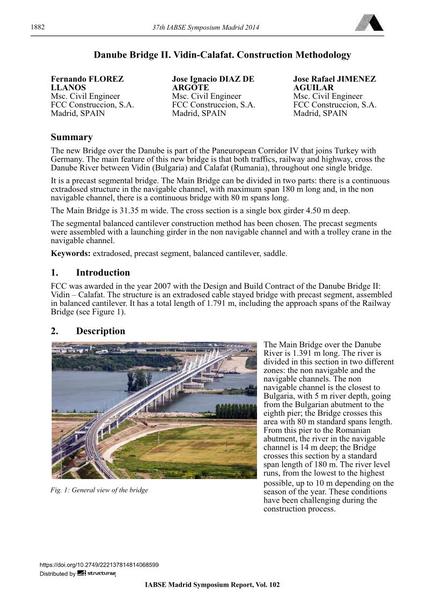Danube Bridge II. Vidin-Calafat. Construction Methodology

|
|
|||||||||||
Bibliographic Details
| Author(s): |
Fernando Flórez Llanos
Jose Ignacio Díaz de Argote José Rafael Jiménez Aguilar |
||||
|---|---|---|---|---|---|
| Medium: | conference paper | ||||
| Language(s): | English | ||||
| Conference: | IABSE Symposium: Engineering for Progress, Nature and People, Madrid, Spain, 3-5 September 2014 | ||||
| Published in: | IABSE Symposium Madrid 2014 | ||||
|
|||||
| Page(s): | 1882-1887 | ||||
| Total no. of pages: | 6 | ||||
| Year: | 2014 | ||||
| DOI: | 10.2749/222137814814068599 | ||||
| Abstract: |
The new Bridge over the Danube is part of the Paneuropean Corridor IV that joins Turkey with Germany. The main feature of this new bridge is that both traffics, railway and highway, cross the Danube River between Vidin (Bulgaria) and Calafat (Rumania), throughout one single bridge. It is a precast segmental bridge. The Main Bridge can be divided in two parts: there is a continuous extradosed structure in the navigable channel, with maximum span 180 m long and, in the non navigable channel, there is a continuous bridge with 80 m spans long. The Main Bridge is 31.35 m wide. The cross section is a single box girder 4.50 m deep. The segmental balanced cantilever construction method has been chosen. The precast segments were assembled with a launching girder in the non navigable channel and with a trolley crane in the navigable channel. |
||||
| Keywords: |
balanced cantilever extradosed saddle precast segment
|
||||
